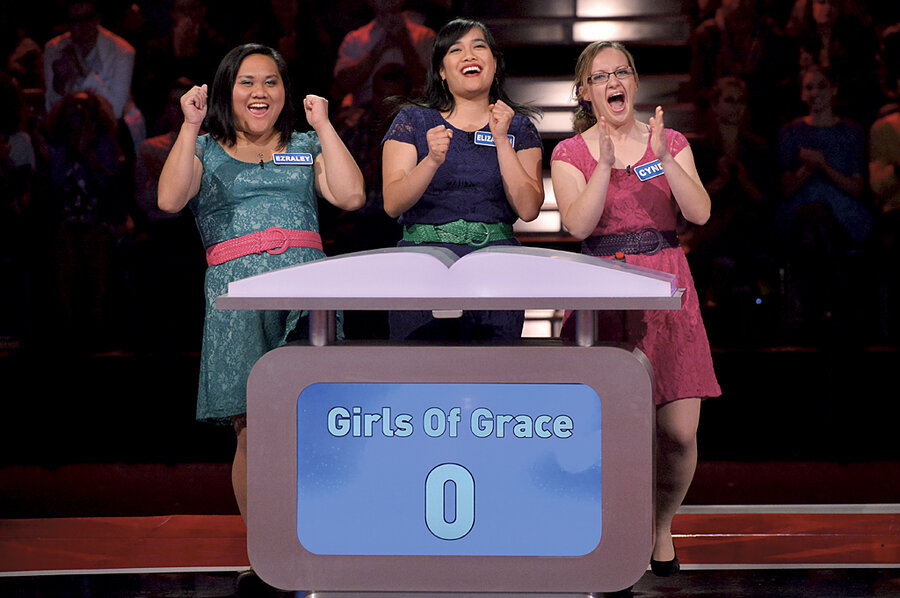Faith makes a TV comeback
Loading...
From snake handlers to trivia buffs, entertainment with religious overtones has gilded the fall TV lineup with the renewals of such ratings-busting shows as “The American Bible Challenge” (GSN), now in its third season, and the return of “Breaking Amish: L.A.,” including a bonus reunion event (TLC). Add ongoing reality shows such as “Preacher’s Daughters” (Lifetime) and the list just keeps growing.
“We are certainly in the midst of a rush of interest in faith-based shows,” says Martha Williamson, executive producer of the CBS hit “Touched by an Angel,” which ran from 1994 to 2003.
The appetite for faith-based shows should hardly be surprising. Some 78 percent of Americans say they are Christian, according to a poll by the Pew Research Center’s Project on Religion and Public Life.
The phenomenal success of the History Channel’s “The Bible,” produced by husband-and-wife team Mark Burnett and Roma Downey, has confirmed for many that, done right, religion as entertainment can be both hot and profitable, says Angie Schuller Wyatt, a faith counselor and granddaughter of Crystal Cathedral founder Robert Schuller.
Much to their surprise, CBS executives learned the same lesson in 1994. “They thought [‘Touched by an Angel’] might air for maybe six episodes, until they could get the next Don Johnson action show on the air,” says Ms. Williamson.
While faith and mass entertainment are not mutually exclusive, they coexist in a delicate balance that risks cheapening religion in order to give it mass appeal, says Bryan Stone, academic dean at Boston University’s School of Theology. “Consumer culture may render a religious tradition more accessible, but our relationship to that tradition remains one of ‘shoppers’ and ‘consumers’ who engage [with it] as a disposable commodity,” he says.
Of equal concern, says Professor Stone, is the fact that Hollywood is attracted to the bizarre and unusual in religion, and tends to focus on those in its programming. “Snake Salvation,” which began airing in September on the National Geographic Channel, features a pair of snake-handling Pentecostal preachers. Expect it to draw a sizable audience, Stone says, “and we can likely expect similar programming on the way.”
Indeed, more is not necessarily better, says Tom Forman, chief executive officer of Relativity Television, who spoke at a June faith-based entertainment conference sponsored by the Hollywood trade magazine Variety. “The good news is there is going to be a lot more of it,” he told the audience. “The bad news is that a lot of it is going to be awful.”







